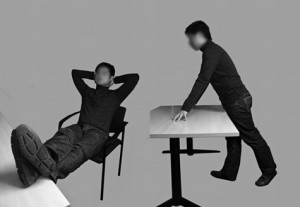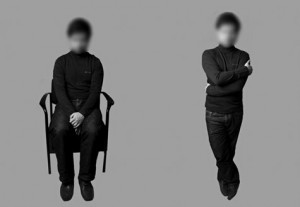How strong is the power of suggestion?
For researchers in the field of embodied cognition—the study of the mind as it relates to and influences the body—suggestion is a force to be reckoned with.
Rooted in psychology, linguistics and neurobiology, embodied cognition has established links between movement and the mental state. A 2008 study published in Discover magazine, for example, found a tie between facial expressions and emotive perceptions. Our Tom Jacobs recently reported on a study from the Netherlands that found that upward motions elevated mood.
New research published in the journal Psychological Science continues this discussion. A team led by Dana R. Carney, assistant professor at Columbia University, examined the psychological, physiological and behavioral effects of body positioning.

The researchers studied 42 participants (26 females and 16 males). Subjects were assigned poses that indicated either a high or low display of power and were told to hold positions for two simple one-minute intervals. Feelings of power were measured through self-report.
By collecting saliva samples from test subjects before and after body positioning, researchers measured levels of hormones linked to displays of power. Cortisol, a stress hormone, often increases with feelings of powerlessness. Testosterone levels rise from cues that encourage or reflect dominance.
After they finished posing, participants were given some money and a chance to gamble to assess risk aversion. Handed $2, subjects were told they could roll a die to double their money or lose it all. Feelings of power were measured again through self-report.
The researchers found that high-power posers were more likely than low-power posers to focus on reward. Eighty-six percent of these participants modified their behavior by gambling, while 60 percent of low-power posers took the risk. High-power posers also reported feeling significantly more powerful than their low-power counterparts.

Hormone levels also indicated a difference between high- and low-power posers. High-power posers showed an increase in testosterone and a decrease in cortisol; lower-power posers saw a decrease and an increase, respectively.
These findings push the understanding of embodied cognition into the realm of physiology and motivation, as body movement is linked to mood and behavior. This also suggests that psychological constructs, like power or introversion, can have roots in a pattern of nonverbal physical cues. Rather than mind over matter, perhaps we should think mass over mind.




